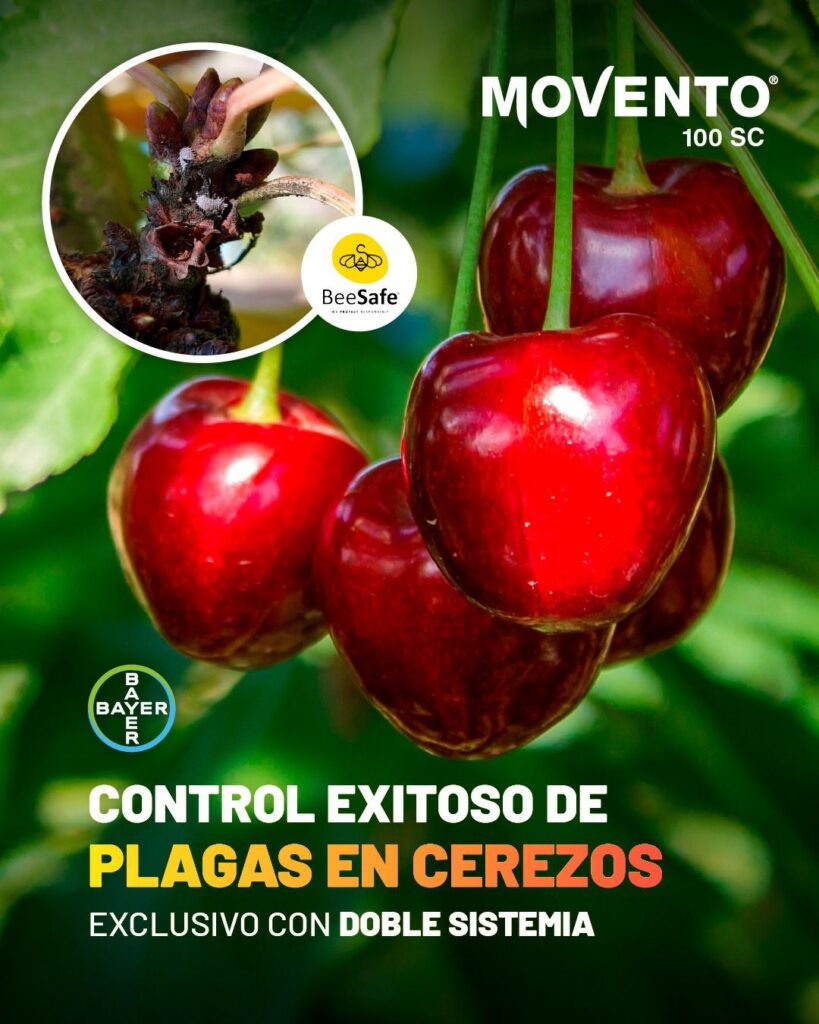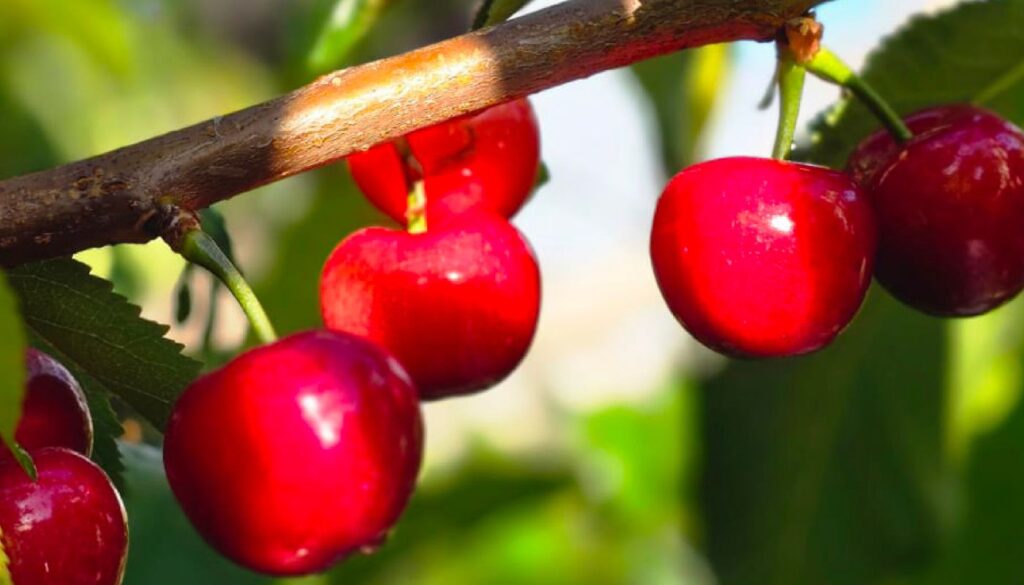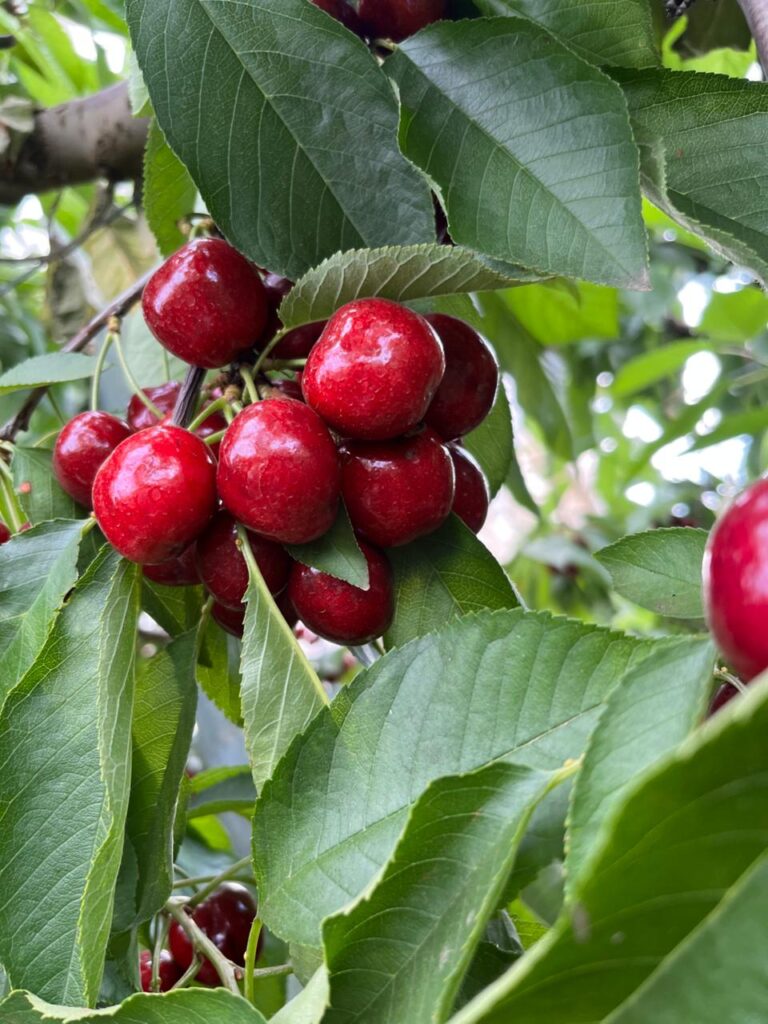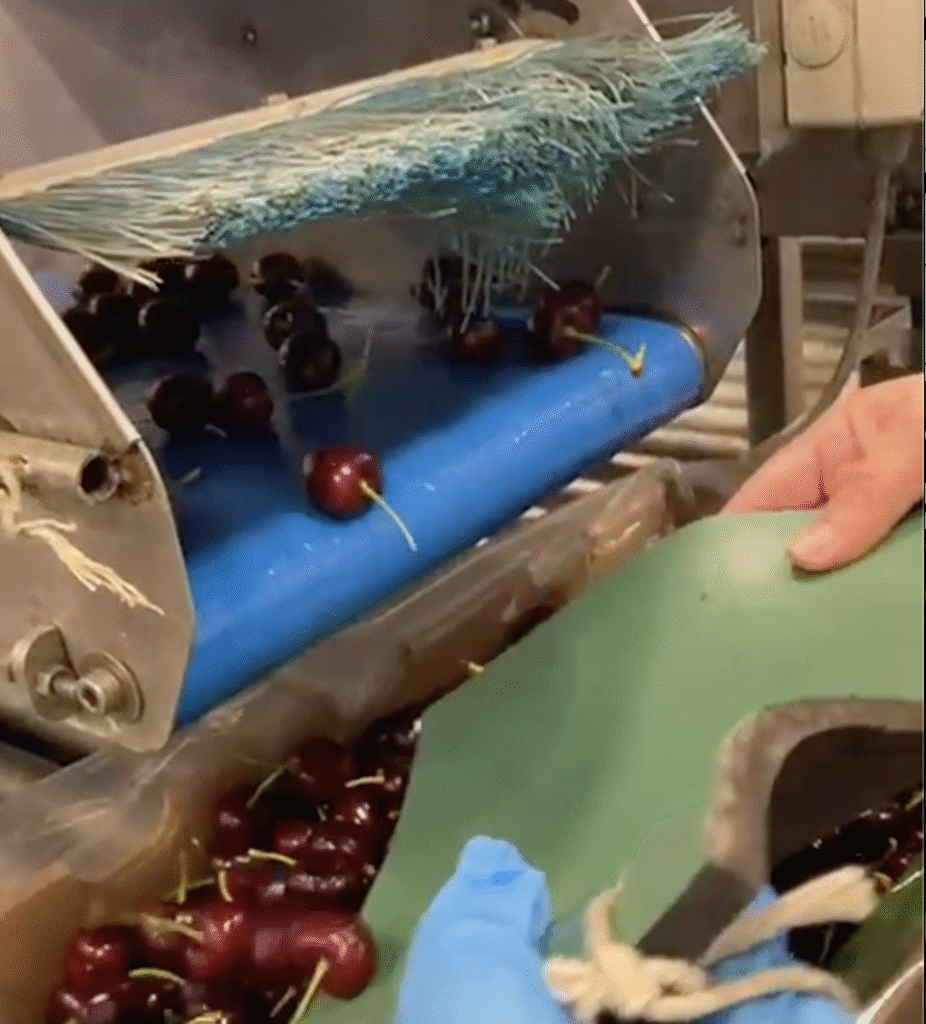A question that was frequently asked by producers to their consultants.
The recent 2022-2023 cherry season started with additional pressure due to a Chinese New Year 10 days earlier than the previous season, which generated one of the narrowest harvest windows that the Chilean cherry industry has ever had, in order to be able to get the fruit to China before January 22, 2023. The famous CNY, a date that marks a before and after in the price of this species, motivated the agronomic teams to generate strategies to advance flowering and harvest, taking into account the risks that this entails, but also the objective of harvesting earlier and being part of the fruit exported to China that is marketed before the holiday. Added to this were fears regarding logistical problems in the ports and wholesale markets of the Asian country in the last two years and the usual unforeseen events: rain in November and a truckers' strike that threatened to interrupt the transfer of the fruit to be shipped. These factors have forced all actors in the Chilean cherry industry to face a new scenario of crop profitability and therefore to consider all possible scenarios to generate the highest annual income from the crop.
In other articles we have reviewed the average cost per hectare for the use of phytosanitary products, nutrition, growth regulators and others; this cost is approximately US$ 2,500/ha, plus the cost associated with applications per season which is approximately US$ 600/ha, which corresponds to a total sum of US$ 3,100 / ha on average.
The question that we can answer from the perspective of the applications of our investment is: How are we using the resources to carry out our applications: Labor and Machinery Days?
In previous articles we have already discussed some recommendations regarding how to calculate the volume of water and air that needs to be moved for the cultivation of cherries in their different stages of development (“sizes”).
According to specialist Carlos Tapia, applications for cherry cultivation vary depending on their state of development and his recommendations are:
Figure 1. Relationship between phenological states and portion of canopy volume (VHA) required to cover the needs of sweet cherry trees in Chile. Source: Carlos Tapia 2022.
1.- Leaf fall and winter break: between 500 and 750 L / ha: 6 applications
2.- Flowering at the beginning of fruit set: 750 to 1,000 L / ha: 6 applications
3.- Pre-harvest setting: 1,000 to 1,200 L / ha: 9 applications
4.- Exceptions: wood pest problems, for example, St. Joseph scale and spider mites) 1,500 to 2,000 L / ha: 4 applications
5.- Total applications (average): 25 applications
All this considering as a reference the real cup volume for each situation.
Following these recommendations, and considering an example of a producer with 50 hectares of cherries in production and with the highest volume of water recommended in each case:
For applications of 750 L/ha
| Planting distance | 3.5 meters between rows |
| Number of plants/ha | 1100 |
| Atomizing equipment | 1500 L capacity |
| Tractor | power of 80 HP |
| Average application speed | 6.4 km/hour |
Applications will take the following times:
| Travel time | 27 minutes (1.5 seconds/floor) |
| Distance from barracks to hydrants expressed in time | 15 minutes, that is, 30 minutes round trip. |
| Water supply time and dose loading | 5 minutes |
With this information we can assist a maximum total of 10 ha / 8-hour shift, having a “remainder” of 35 minutes in case of unforeseen events.
For applications of 1,000 L/ha
| Planting distance | 3.5 meters between rows |
| Number of plants/ha | 1.100 |
| Atomizing equipment | 1,500 L capacity |
| Tractor | power of 80 HP |
| Application speed | average of 6.4 km/hour |
Applications will take the following times:
| Travel time | 27 minutes (1.5 seconds/floor) |
| Distance from barracks to hydrants expressed in time | 5 minutes, that is, 30 minutes round trip. |
| Water supply time and dose loading | 5 minutes |
With this information we can assist a maximum total of 9 ha / 8-hour shift, having a “remainder” of 30 minutes in case of unforeseen events.
For applications of 1,200 L/ha
| Planting distance | 3.5 meters between rows |
| Number of plants/ha | 1.100 |
| Atomizing equipment | 1,500 L capacity |
| Tractor | power of 80 HP |
| Application speed | average of 6.4 km/hour |
Applications will take the following times:
| Travel time | 27 minutes (1.5 seconds/floor) |
| Distance from barracks to hydrants expressed in time | 15 minutes, that is, 30 minutes round trip. |
| Water supply time and dose loading | 5 minutes |
With this information we can assist a maximum total of 8.5 ha / 8-hour shift, having a “remainder” of only 4 minutes in case of unforeseen events.
For applications of 1,500 L/ha
| Planting distance | 3.5 meters between rows |
| Number of plants/ha | 1100 |
| Atomizing equipment | 1500 L capacity |
| Tractor | power of 80 HP |
| Application speed | average of 6.4 km/hour |
Applications will take the following times:
| Travel time | 27 minutes (1.5 seconds/floor) |
| Distance from barracks to hydrants expressed in time | 15 minutes, that is, 30 minutes round trip. |
| Water supply time and dose loading: | 5 minutes |
With this information we can assist a total of 7.25 ha / 8-hour shift, having a “remainder” of only 4 minutes in case of unforeseen events.
For applications of 2,000 L/ha
| Planting distance | 3.5 meters between rows |
| Planting distance | 1100 |
| Atomizing equipment | 1500 L capacity |
| Tractor | power of 80 HP |
| Application speed | average of 4.7 km/hour |
Applications will take the following times:
| Travel time | 37 minutes (2.0 seconds/floor) |
| Distance from barracks to hydrants expressed in time | 15 minutes, that is, 30 minutes round trip. |
| Water supply time and dose loading | 5 minutes |
With this information we can assist a total of 5.5 ha / 8-hour shift, having a “remainder” of only 11 minutes in case of unforeseen events.
In summary, to be able to develop the applications with the water volume recommendations at each stage of crop development and considering the example of a 50-hectare field in production and with 2 teams available with 1,500 L tanks: we need 3 days for applications ranging from 750 to 1,200 L/ha; we need 4 to 5 days for applications of 1,500 to 2,000 L/ha (Table 1).
Table 1. Summary of time requirements in days for applications with atomizing equipment with a tank capacity of 1,500 L
| Volume of water | Performance/daily | Field Surface | Quantity of Equipment | Number of days |
| (L/ha) | (ha/shift 8 hours) | (ha) | Available | Application |
| 750 | 10 | 50 | 2 | 2,5 |
| 1000 | 9 | 50 | 2 | 2,8 |
| 1200 | 8,5 | 50 | 2 | 2,9 |
| 1500 | 7,25 | 50 | 2 | 3,4 |
| 2000 | 5,5 | 50 | 2 | 4,5 |
Answering the question, How are we using the resources to carry out our applications: Labor and Machinery Days?, we have a guide that allows us to corroborate how efficiently we are using our available resources to carry out the applications in our crops. I make the observation that it is one of many ways that we have had to verify during 20 years in the field. There are many situations, each one very particular to evaluate, such as the availability of 2,000 L capacity sprayers (Table 2), lands with different eases and/or difficulties of transit, different conduction systems, different situations of physiological and pathological condition, among others.
Table 2. Summary of time requirements in days for applications with atomizing equipment with a 2000 L capacity tank
| Volume of water | Performance/daily | Field Surface | Quantity of Equipment | Number of days |
| (L/ha) | (ha/shift 8 hours) | (ha) | Available | Application |
| 750 | 12 | 50 | 2 | 2,1 |
| 1000 | 10,5 | 50 | 2 | 2,4 |
| 1200 | 10 | 50 | 2 | 2,5 |
| 1500 | 8,7 | 50 | 2 | 2,9 |
| 2000 | 6 | 50 | 2 | 4,2 |
To the above analysis, we can add the dosage item to be used in each case. Most labels give us a dosage range by concentration and also a minimum dosage/ha. The invitation is to develop recommendations together with manufacturers, private consultants and producers that take into account their specific condition for the investment and use or application of their annual programs.
Finally, the recent introduction of pests of great importance in the crop is well known, as is the action of “climate change” on the development of pests as impactful as phytophagous spiders, which affect the method and recommendation of application. In each situation we must be very rigorous so that our operations in the field (time and resources used) are very efficient.
In order to develop effective and efficient application management plans, we must have previously diagnosed equipment in all its components, repaired and replaced its critical elements, perform annual and periodic maintenance, permanent cleaning and have highly trained personnel to develop the applications that will translate into the success of our crop at harvest with the least impact on the environment and people.










